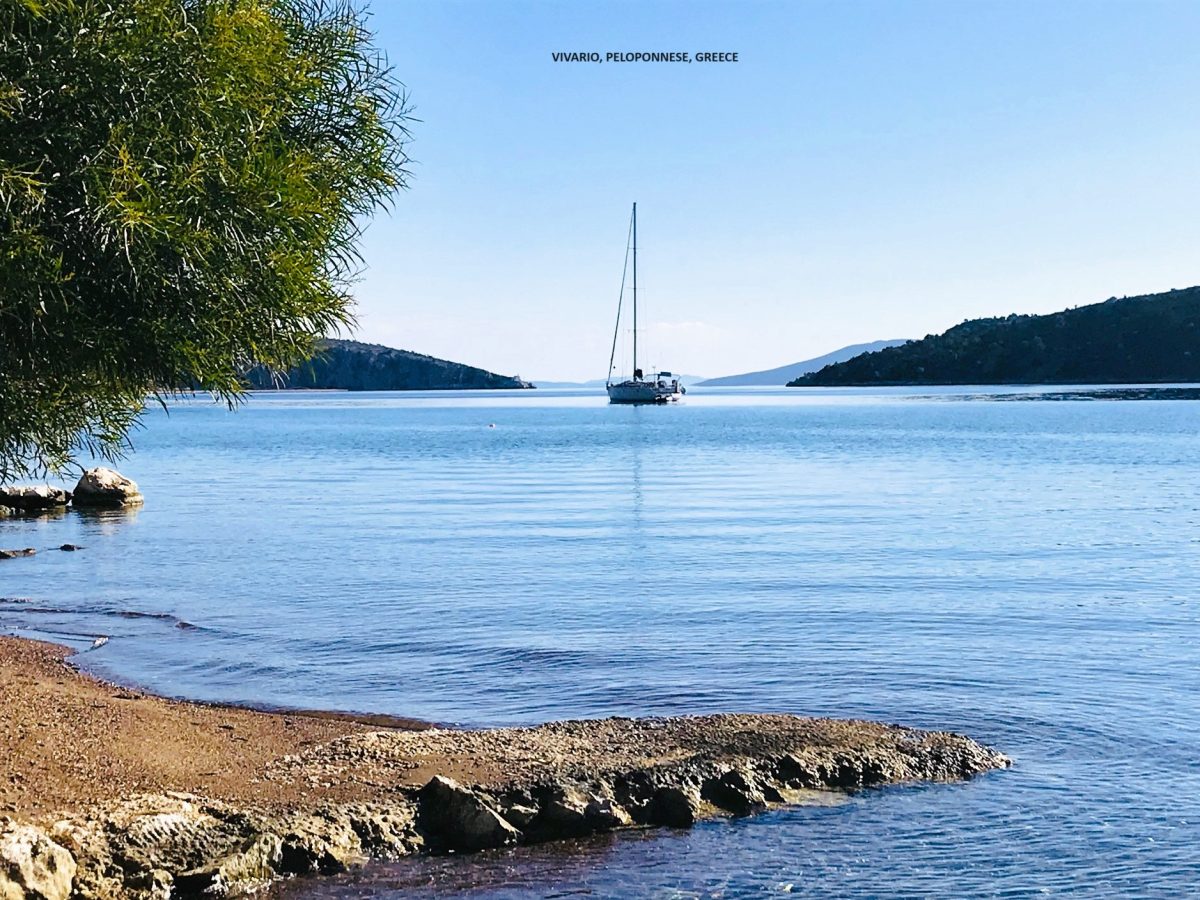Apologies, once again. It is 21 March now and it is just over a month ago that we visited Merida. I’m well behind with this blog.
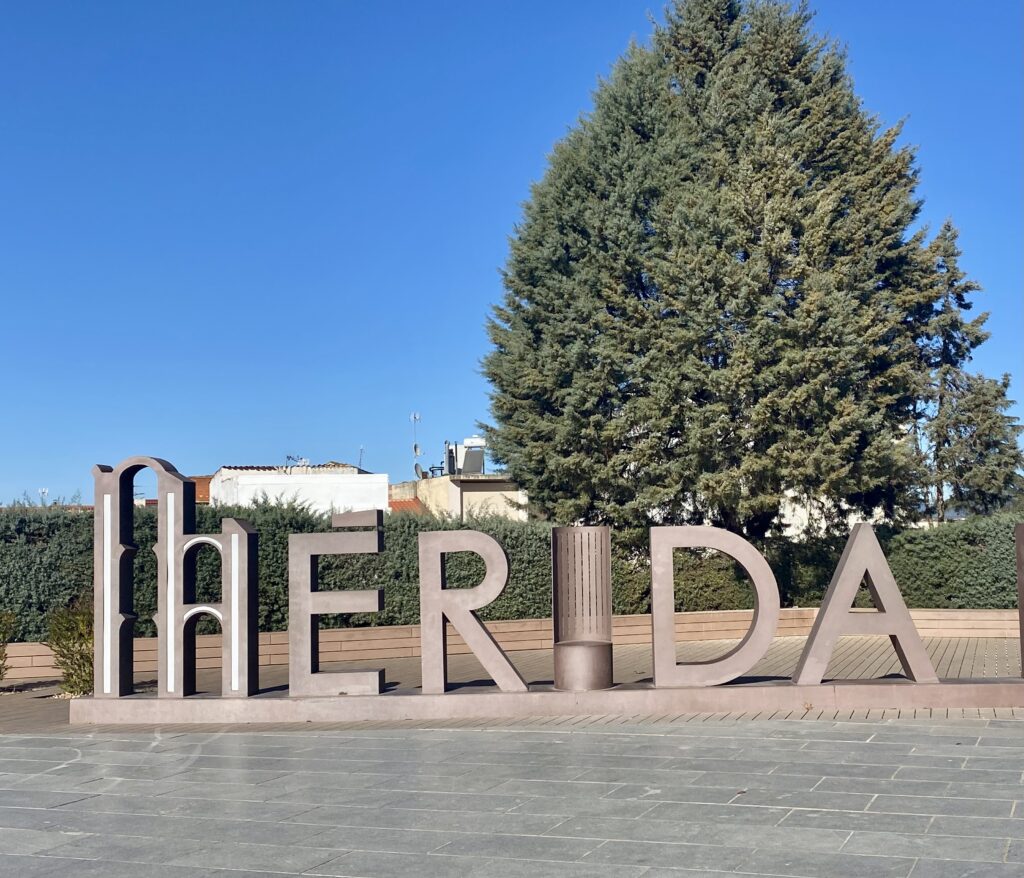
With some 40,000 inhabitants the city of Merida is the capital of Extremadura but, putting it politely, I thought it a rather underwhelming little city UNTIL we stumbled across some of it’s Roman monuments. Wow! They are everywhere. The city hosts an extensive and seriously impressive collection of Roman ruins (some of them in remarkable condition). This is without a doubt one of Spain’s largest archaeological sites and the perfect destination for anyone interested in Roman history. It came as no surprise to learn it was designated a UNESCO World Heritage Site in 1993.
Founded in 25 BC as Augusta Emirita the city grew to become capital of the Roman Province of Lusitania and, with some 90,000 inhabitants, the largest Roman town across the Iberian Peninsula. After the decline of the Romans came the Visigoths (although there is little in the city to mark their presence) and then the Moors who occupied the place for more than 500 years and themselves left a small legacy.
We parked up near the town centre and made our way through some of Merida’s narrower streets (almost all of which are lined with orange trees) towards the town’s main square, the Plaza de Espana. Almost immediately we were passing some quite fantastic Roman monuments. Vanya doesn’t have the same interest as I do in such things and, after a short wander around the main square (pausing only buy a new handbag) she returned to the Van with the dogs leaving me to explore some of the city’s more interesting sights (or should I say sites?).
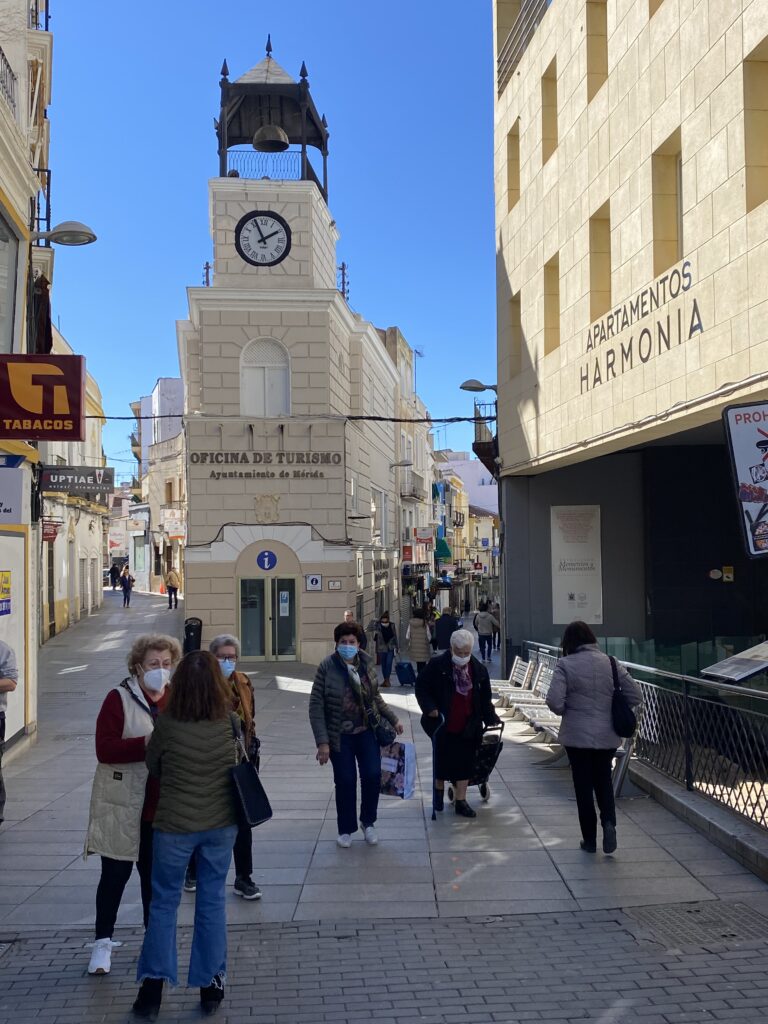
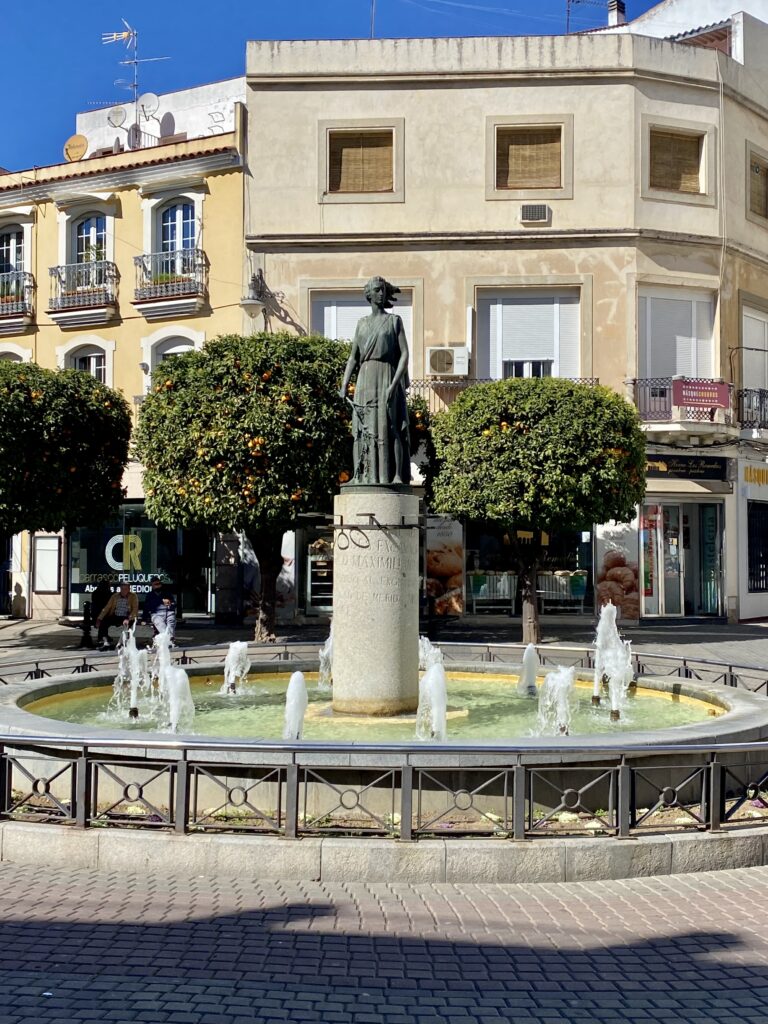


For my part, the most spectacular of all the surviving monuments is the Roman Theatre constructed between 16 BC and 15BC by order of the Consul (and great friend of Emperor Augustus), Marcus Vipsanius Agrippa. This is one of the best preserved Roman theatres in the world. Built to accommodate 6,000 people, the theatre is the pride of Merida and regularly hosts dramatic and musical events, including the annual International Classical Theatre Festival.
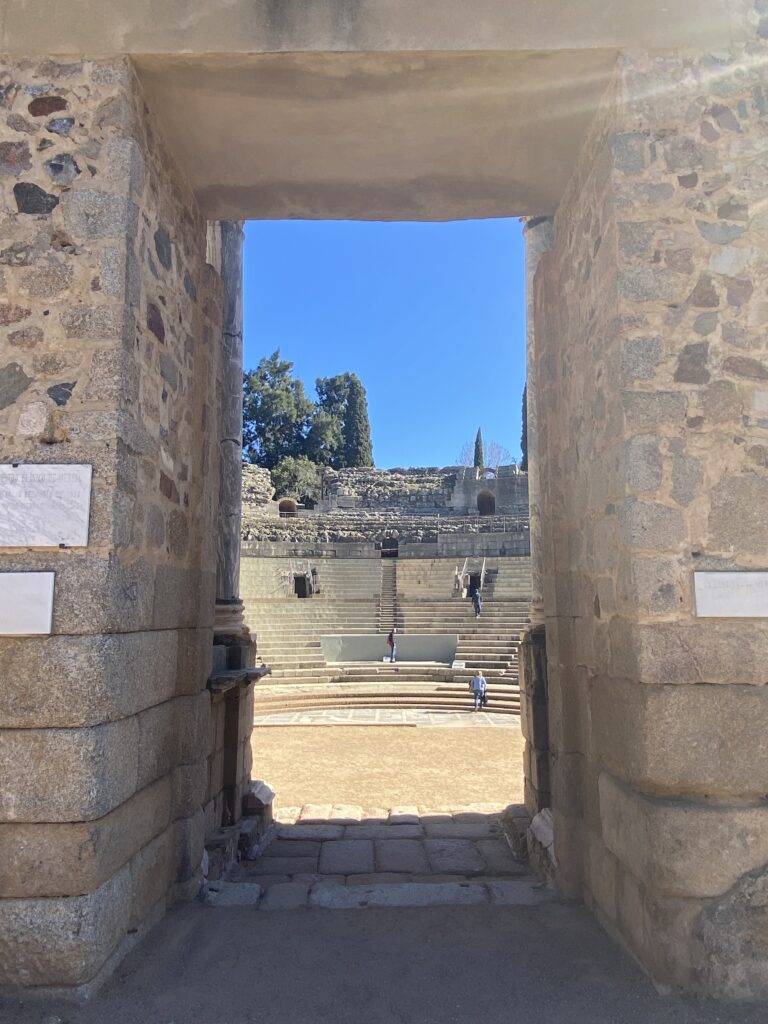
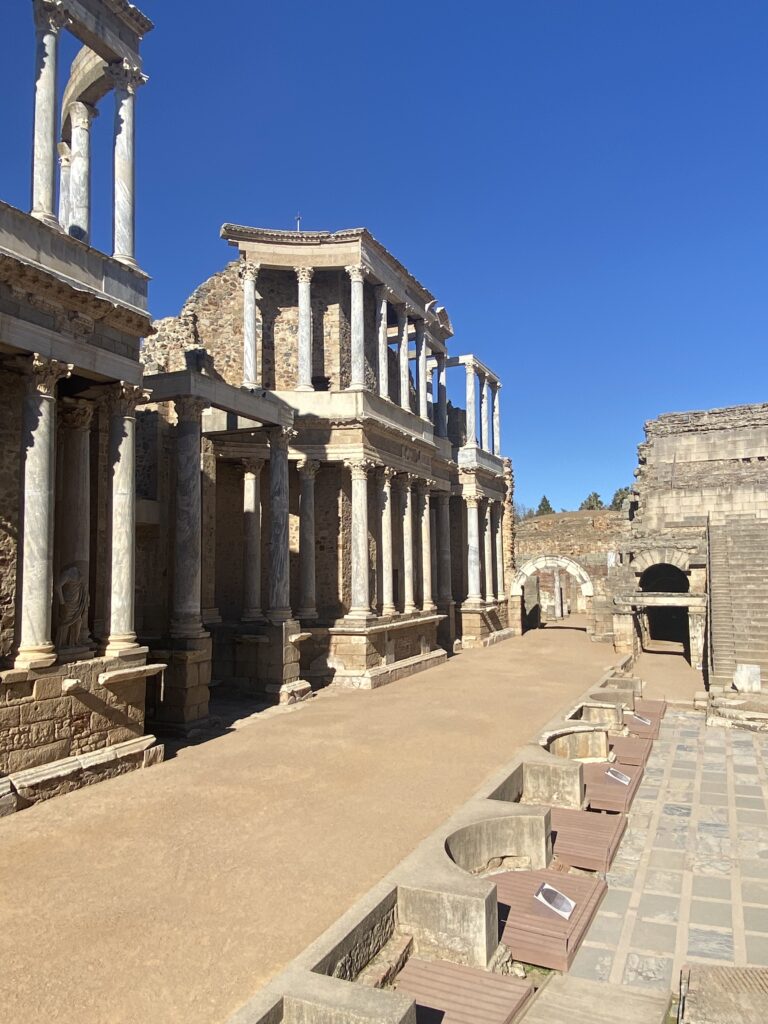
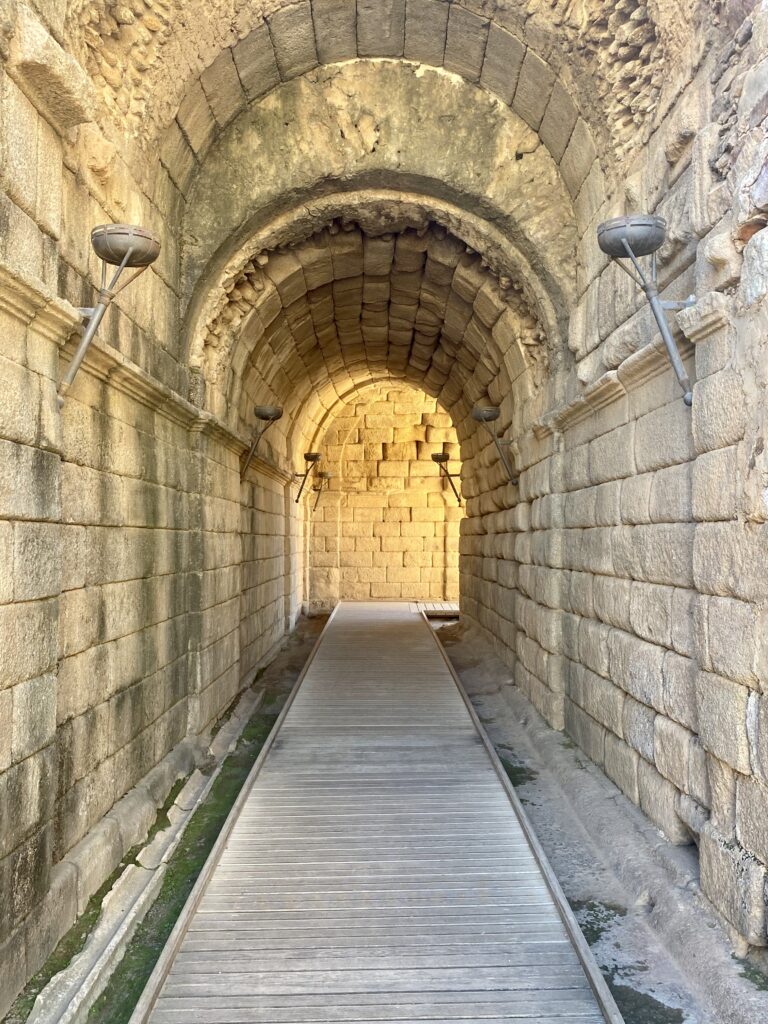

Behind the theatre is the city’s amphitheatre (arena) which could accommodate up to 15,000 people and the Casa del Anfiteatro with it’s colourful mosaic floors and murals.

Merida is a trove of Roman buildings and monuments. I didn’t have time to visit all of them but the Los Milagros Aqueduct (one of three aqueducts built to ensure a regular supply of water but which is now home to countless roosting storks), the now pedestrianised Puento Romano Bridge across the Guadiana River, the Temple of Diana and the House of Mitreo (one of the largest Roman houses to be found anywhere in Europe) all deserved a visit.
There is also a Hippodrome or Circus to be seen; there’s the Roman Forum and various Roman Dams (just outside the city) but they must all wait until a next visit as must the Moorish Castle of Alcazaba and the 13th century Basilica of Santa Eulalia. The list goes on but we were bound for Caceres next.

